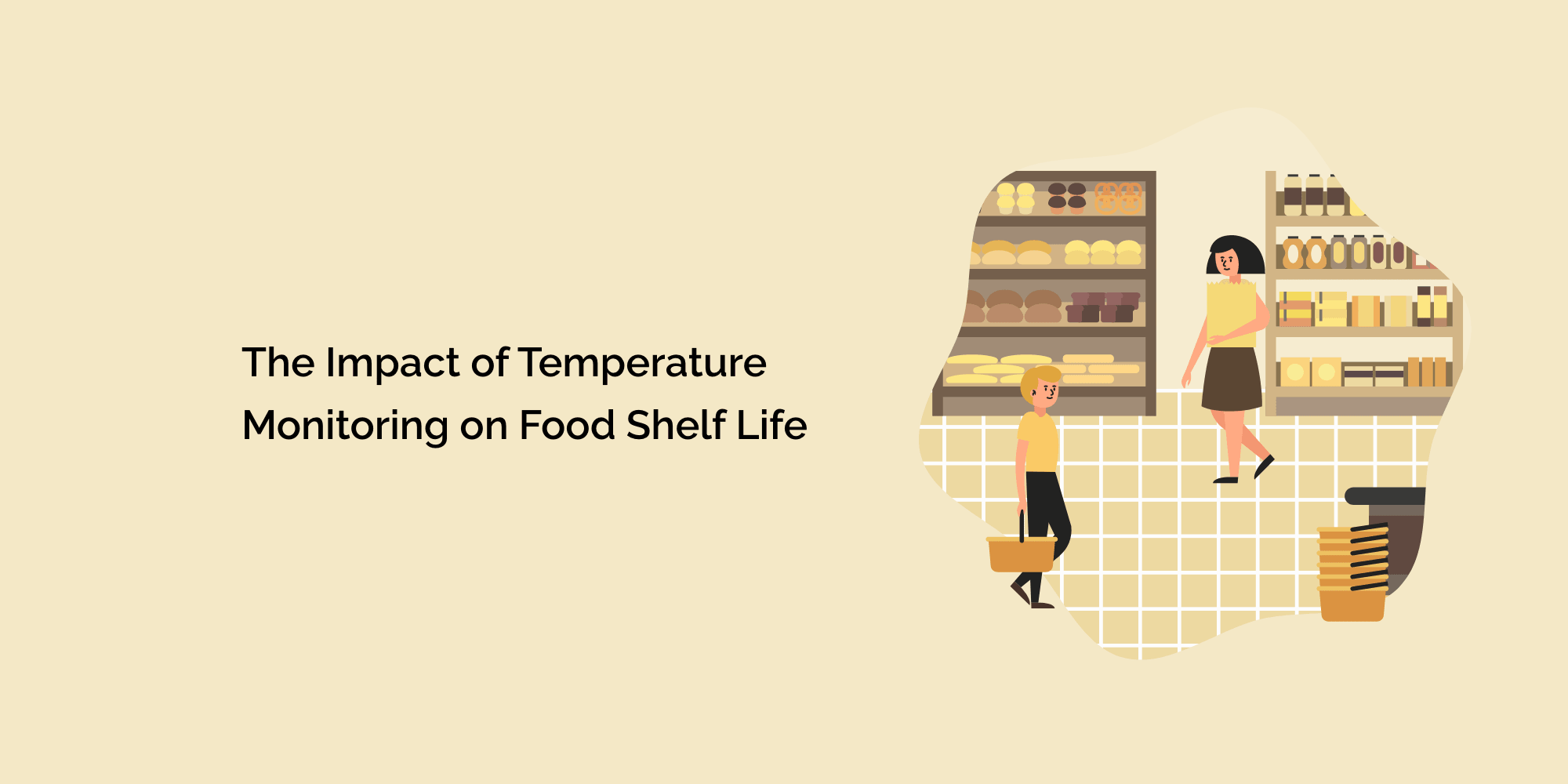Food safety and quality are paramount concerns in the food industry. Maintaining the right temperature is crucial for preserving the freshness, flavor, and overall quality of food products.
In this blog, we will delve into the significance of temperature monitoring in relation to food shelf life. We will explore the effects of temperature on various food categories and highlight the benefits of implementing robust temperature monitoring systems.
So, let's uncover the impact of temperature monitoring on food shelf life and discover how it can revolutionize the way we handle and preserve food.
The Role of Temperature in Food Shelf Life
Shelf life is a term commonly used in the food industry to describe the duration for which a product remains safe to consume and retains its desired quality attributes. The shelf life of a food product is greatly influenced by temperature. Various chemical and biological reactions occur within food items, and temperature plays a vital role in controlling the rate of these reactions.
In this section, we will delve into the science behind temperature and its effect on food deterioration. We will also explore the factors influencing microbial growth and enzymatic activity in different temperature ranges and discuss the role of temperature abuse in accelerating food spoilage.
Temperature-Related Challenges in Food Storage
The storage of food products involves several temperature-related challenges. From the moment food is harvested or manufactured until it reaches the consumer, it goes through various stages of storage and transportation where temperature control is critical. In this section, we will explore the impact of improper temperature control on various food categories such as perishable, frozen, and chilled products.
We will discuss the consequences of temperature fluctuations on food quality and highlight case studies that demonstrate the importance of temperature monitoring in mitigating these challenges. Additionally, we will identify vulnerable points in the food supply chain where temperature monitoring is crucial.
Benefits of Temperature Monitoring Systems
Implementing robust temperature monitoring systems can have a profound impact on food shelf life and quality. In this section, we will introduce temperature monitoring systems and their components. We will discuss how real-time monitoring provides constant visibility into temperature conditions, enabling proactive measures to be taken. We will explore how early warning systems can detect temperature deviations and prevent potential risks, ensuring that food products are stored and transported under optimal conditions.
Moreover, we will emphasize the importance of compliance with regulatory standards and food safety guidelines. Lastly, we will discuss how data analysis and insights derived from temperature monitoring can be leveraged for process optimization and quality improvement.
Implementing Effective Temperature Monitoring Practices
To ensure the effectiveness of temperature monitoring, it is essential to establish a comprehensive system and follow best practices. This section will outline the steps involved in implementing an effective temperature monitoring system. We will discuss the process of choosing appropriate temperature monitoring devices and technologies based on specific requirements.
Furthermore, we will address the placement of temperature sensors in critical areas to ensure accurate measurements. Staff training and education on temperature monitoring best practices will also be highlighted. Lastly, we will emphasize the importance of regular calibration and maintenance of temperature monitoring equipment.
Case Studies and Success Stories
Real-world examples provide valuable insights into the benefits of temperature monitoring. In this section, we will showcase case studies of businesses that have successfully implemented temperature monitoring strategies. These case studies will highlight the positive impact of temperature monitoring on food shelf life, quality, and customer satisfaction.
We will explore how businesses have achieved financial benefits and a substantial return on investment through effective temperature monitoring practices.
Emerging Technologies and Future Trends
Technology continues to advance, offering new opportunities for temperature monitoring in the food industry. In this section, we will explore emerging technologies that have the potential to revolutionize temperature monitoring practices. We will discuss IoT-enabled solutions that provide real-time temperature monitoring and remote access, enabling businesses to monitor and control temperature conditions from anywhere.
Additionally, we will delve into the applications of artificial intelligence and predictive analytics in proactive temperature management. Lastly, we will discuss the potential of blockchain technology in enhancing traceability and transparency in temperature monitoring, thus ensuring food safety and quality.
Conclusion:
Temperature monitoring is an indispensable aspect of maintaining food safety and prolonging shelf life. By recognizing the critical role of temperature in food quality, businesses can take proactive steps to implement effective temperature monitoring systems.
Investing in advanced technologies and best practices not only ensures compliance with regulations but also enhances customer satisfaction, reduces waste, and improves overall operational efficiency. Let us embrace the power of temperature monitoring and revolutionize the way we handle, store, and enjoy safe, high-quality food products.








